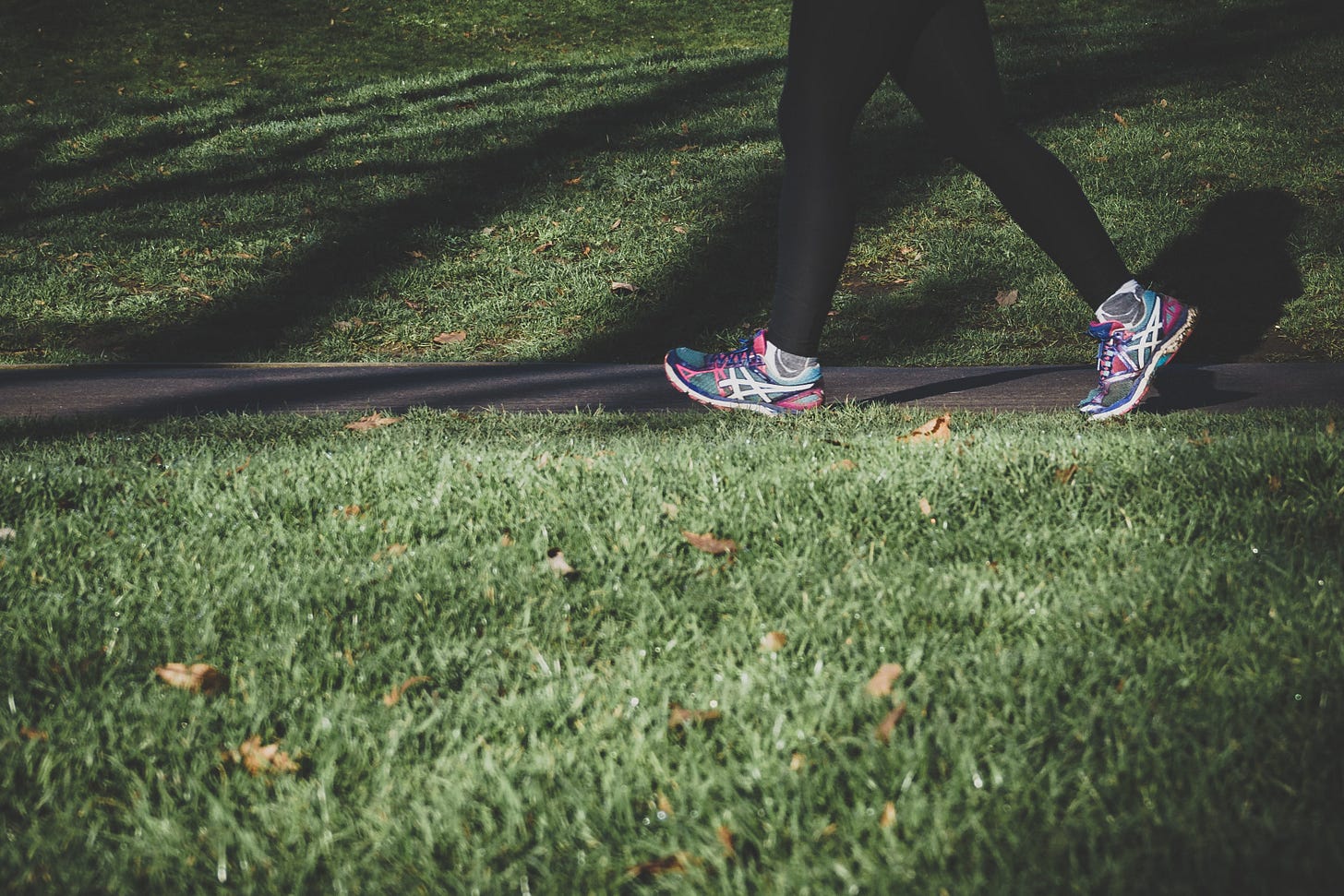Want to feel good? Put one foot in front of the other until you find your amazing life
(No. 99) Walking is the easiest way to work out as you age, by Stephen P. Williams
Good shoes are essential for repeated, long walks. Photo by Arek Adeoye on Unsplash
Regular walks can strengthen bones, sharpen brains and make hearts happier, according to a survey by the Harvard T.H. Chan School of Public Health. Walking is also good for contemplation, something that is in short supply these days. The four or five miles I walk every day give my thinking brain a chance to pause, making space for my creative thoughts. Generally, walking calms me. So does watching this guy’s videos:
When I first started following the @pctdude on his walk from Mexico to Canada, his daily hikes looked pretty easy. He was following the 2,650 mile long Pacific Crest Trail (PCT), which stretches from Mexico north to Canada. It was spring when he set out from the Mexican border, east of San Diego, and the days were warm and the nights were cool.
Watching his videos, I began to think that I also might like doing the same months-long hike. Yet, when @pctdude hit the snow-covered Sierra Nevadas, I realized how tough the trek is. Would my knees hold up? Probably, but what about the grizzly bears? TikTok offers no shortage of terrifying grizzly-human encounters. A little research showed me that such attacks are exceedingly rare. According to Trailsandsummits.com:
In the last 150 years, only one person has been killed by a bear in the PCT states of California, Oregon and Washington in the wild. So, you would be just as likely to die by falling over and landing on a turnip. I have never fallen on a turnip, but I’m sure that would be quite unpleasant.
It’s possible that one day I will have the time and physical stamina to make the PCT trek, but I don’t count on it. Instead, I look for happiness and fitness on my walks around the island of Manhattan. I wear a watch that tracks my distance, speed and heart rate. As a walker, I have to really push myself to get my beats per minute above 110, but I keep it as my general goal. I average a dismal 3 miles an hour, though that rate is skewed by the fact that I stop often to take photos and videos of stuff I see around the city. Like this view of an empty, early morning 14th Street:
I try to skip the headphones, so I can listen to myself, instead of podcasts. I turn doctor appointments into walks — the other day I walked four miles home from the eye clinic even after they’d dilated my pupils (all well, by the way). I’ve lost many pounds since I started walking regularly, about six months ago. The clothes that had shrunk last winter miraculously expanded again. The stairs moan a little less. I sleep better and feel a sense of accomplishment. I’m ready for bigger challenges. We’ll see what comes, but I know I’ll keep walking somewhere.
How to walk
Walking properly helps you avoid joint wear and tear and muscle aches and balance issues. It helps digestion and immunity and many other body systems. Here are some tips for walking well:
Stand tall with your chin parallel to the ground and your ears above your shoulders.
Look forward about 20 feet as you walk.
Pay attention to your shoulders. If they are tense and hunched, pull them back. Shrug your shoulders as you walk to relieve tightness.
Stand tall to elongate your spine.
Fire up your core muscles, as well as your glutes.
Step heel first, then roll onto your toe.
Swing your arms as you walk, from your shoulders, not your elbows.
Wear good shoes.
What not to do
Keep your strides on the short side, so you can push off from your rear leg.
Don’t look down.
Don’t get slouchy.
Here’s how I fight boredom while walking:
Thanks for being here. I love that you are thinking about what it means to age. So many don’t, and they might be missing out on the details of one of life’s most engaging experiences. Have a beautiful day, and leave a comment! — Stephen





